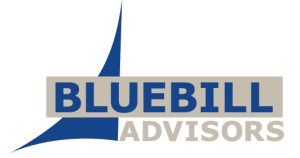Altova Inc. announced the immediate availability of Release 4 of its Version 2004 product line. Among the major enhancements are extended data-mapping functionality in Altova MAPFORCE 2004, a completely redesigned Altova STYLEVISION 2004, and numerous upgrades to XMLSPY 2004. The entire Version 2004 Release 4 (v2004r4) product line is available for immediate download. In addition to the new features in v2004r4, the Altova Support and Maintenance Package (SMP) now includes coverage for major software releases. New bundled packaging for suites was also announced. Altova Enterprise XML Suite includes v2004r4 Enterprise Editions of XMLSPY, MAPFORCE and STYLEVISION at a savings of almost $700 (USD) off regular price of products purchased separately. Altova Professional XML Suite includes v2004r4 Professional Editions of XMLSPY, MAPFORCE and STYLEVISION at a savings of almost $250 (USD) off regular price of products purchased separately. www.altova.com
Category: Content management & strategy (Page 352 of 482)
This category includes editorial and news blog posts related to content management and content strategy. For older, long form reports, papers, and research on these topics see our Resources page.
Content management is a broad topic that refers to the management of unstructured or semi-structured content as a standalone system or a component of another system. Varieties of content management systems (CMS) include: web content management (WCM), enterprise content management (ECM), component content management (CCM), and digital asset management (DAM) systems. Content management systems are also now widely marketed as Digital Experience Management (DEM or DXM, DXP), and Customer Experience Management (CEM or CXM) systems or platforms, and may include additional marketing technology functions.
Content strategy topics include information architecture, content and information models, content globalization, and localization.
For some historical perspective see:
https://gilbane.com/gilbane-report-vol-8-num-8-what-is-content-management/
Dralasoft, Inc. announced that Xythos Software has chosen to partner with them to provide integrated workflow/document management solutions for enterprise use. The solutions will provide a way for organizations to access, distribute, route, process, and review documents and other file-based information according to the users pre-set rules and standards. Xythos has customized Dralasoft Workflow, Dralasofts BPM product, for use with its WebFile family of products. The new solutions will leverage a range of Xythos/Dralasoft applications including Xythos WebFile Server (WFS) and Client Technology; WebFile Document Manager, WebFile Classification Manager, and WebFile Records Manager; WebFile Client and WebFile Scan Client; as well as Dralasoft Workflow Engine, Workflow Manager, and Workflow Studio. www.dralasoft.com
Comprendium announced the immediate availability of ContentGateWay 2.1. This version of its content integration solution extends product functionality, while making it simpler to use. Building on Comprendium’s Content Services Platform concept ContentGateWay 2.1 includes additional application and infrastructure platform support; enhanced security, scalability and availability features; and a number of end-user enhancements. ContentGateWay 2.1 enhances support for essential enterprise functionality, including load balancing, clustering, caching, and replication. ContentGateWay2.1 provides a unified interface to all content repositories (e.g. XML, Java, .net) by supporting any available protocol such as Corba, SOAP, JMS, RMI, and SMI Comprendium’s optimized content protocol. With the new Virtual View users no longer need to know where content resides, since all integrated repositories are available. They can also easily build their own content GUIs or integrate them into existing applications through the availability of content access visual content components (e.g. taglibs, ActiveX). ContentGateWay is based on J2EE and includes a SOAP-based interface. www.comprendium.biz
Hot Banana Software Inc. and SitePosition announced a partnership to co-market Hot Banana, a Web Content Management System, built from the ground up in harmony with Search Engine Optimization (SEO) best practices. Websites with content that has previously been inaccessible to search engine spiders, due to Macromedia’s Flash!, or dynamic or database-driven content, can now admit search engine spiders and crawlers to access all publicly-available web content, no matter how deep. Hot Banana’s ability to parse and index all existing and updated web content, information and data enables any website to achieve a balance between organic search engine rankings and a paid-ranking strategy with Google, Yahoo!, and MSN. Hot Banana is built on Macromedia’s Cold Fusion MX Server, can leverage the features available to a J2EE application server, and can be deployed on IBM’s WebSphere or Macromedia’s JRUN. Hot Banana’s database engine is Microsoft’s SQL Server, and Hot Banana is .NET-, XML-, and Web Services-ready. Web server performance is taken into consideration by caching database queries, creating persistent Web page objects, and producing cached, XML-based navigation structures. www.hotbanana.com, www.siteposition.ca
Extensis Inc. announced immediate availability of its Digital Asset Management (DAM) solution, Portfolio 7 and Portfolio Server 7 for Windows (Macintosh versions will be available in May). Portfolio enables small-to-medium sized organizations to multiple workgroups in global 2000 companies to organize, retrieve, repurpose, and distribute digital files. Portfolios new AutoSync functionality allows users to assign tasks to Portfolio Server, enabling automatic synchronization. NetPublish is an add-on module that automates the process of turning Portfolio catalogs into full featured websites. Other features include One Click CD/DVD archiving, Batch Image Conversion that allows users to convert image files to JPEG or TIFF format, with controls for resolution, size and color mode, and Round-trip embedding of IPTC and XMP metadata into JPEG and TIFF files. Portfolio 7 is available at an estimated street price of $199.95US with a single NetPublish license. Upgrades are available for an estimated street price of $99.95US. Portfolio Server’s estimated street price is $3,499.95US. Upgrades to Portfolio 7 Server are available for an estimated street price of $1,999.95. NetPublish Server licenses can be purchased for an estimated street price of $1999.95US. www.extensis.com
Vignette Corp. announced that it has released a comprehensive set of tools to help organizations measure and improve business efficiency. Organizations interested in the Vignette Efficiency Audit will work with experienced third-party consultants to gather their business requirements, review overall vision and justification, conduct a gap analysis, monitor use of existing investments, and develop best practices. Upon completion of the audit, Vignette and the respective partner will provide a customized report that provides a detailed picture of areas throughout the organization where efficiencies can be increased, along with customized recommendations on how to improve overall information technology performance. Organizations will have an opportunity to see potential return on investment and total cost of ownership estimates for each option based on individual definitions. Vignette partners Acquity Group and Rapidigm are the first to offer the Vignette Efficiency Audit. In addition, Vignette has developed the Vignette Efficiency Assessment and the Vignette Efficiency Evaluation. Both programs are available at no additional charge upon completing the registration requirements. www.vignette.com
Documentum announced its Application Logo Program that provides Documentum partners with resources and guidance for developing offerings based on the Documentum Enterprise Content Management (ECM) platform and helps customers easily identify Documentum-accredited solutions for extending their use of the platform. The Application Logo Program provides partners with design standards, architectural support and development best practices for developing out-of-the-box applications, integrations and solutions based on the Documentum ECM platform. Partners in the Application Logo Program earn a “Designed for Documentum” designation for a specific offering by conforming to a stringent set of design specifications and other criteria established by Documentum in collaboration with its partners and customers. Currently, 12 offerings that have earned the Designed for Documentum designation are available with additional offerings currently being evaluated. www.documentum.com
TRADOS Inc. announced that its TRADOS Language Server for Documentum has received the “Designed for Documentum” logo designation. The Designed for Documentum accreditation can be earned by offerings developed on the Documentum ECM platform, as part of the new Application Logo Program. TRADOS Language Server for Documentum is an integration that adds multilingual and localization capabilities into the Documentum ECM platform. The system integrates with Documentum repositories and workflows to enable companies to manage their localization processes from inside the Documentum system. www.trados.com, www.documentum.com

